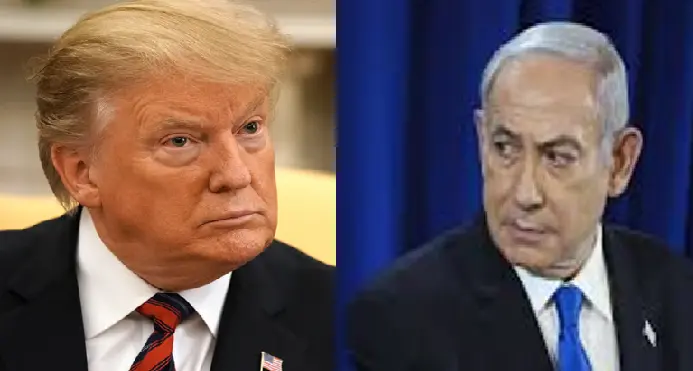
Donald Trump and Benjamin Netanyahu propose a controversial relocation plan for Palestinians in Gaza, framing it as “free choice.”
The ‘Free Choice’ Vision: Strategic Diplomacy or Disguised Displacement?
Gaza Relocation Gambit – During a high-profile dinner at the White House, US President Donald Trump and Israeli Prime Minister Benjamin Netanyahu unveiled a plan that could redefine the future of Gaza and potentially redraw the map of Middle Eastern diplomacy. The proposal? Offer Palestinians the “freedom” to leave Gaza and resettle in third countries, with the promise of a better life.
Netanyahu described the initiative as a humanitarian breakthrough, stating, “If people want to stay, they can stay. But if they want to leave, they should be able to leave. It shouldn’t be a prison.” Trump echoed the sentiment, calling it a “brilliant vision” and claiming “great cooperation” from neighbouring countries.
But beneath the rhetoric lies a deeply polarizing reality. Gaza, ravaged by nearly two years of war, has seen over 57,000 deaths and mass displacement. Critics argue that offering relocation amid such devastation is not a choice, it’s coercion. Human rights groups warn that the plan could violate international law, potentially constituting a war crime under the Geneva Conventions.
Global Reaction: Condemnation, Caution, and Calculated Silence
The international response has been swift and divided. Arab nations have largely rejected the idea, refusing to accept displaced Palestinians. European allies have expressed concern over the legality and morality of the plan. Meanwhile, the White House has attempted to soften the language, emphasizing that the proposal is “not being forced” but “recommended”.
Key reactions include:
- Human Rights Watch: Warned of “forcible transfer under the guise of redevelopment.”
- UN Agencies: Raised alarms over famine and humanitarian collapse in Gaza.
- Arab League: Called the plan “unacceptable and destabilizing.”
Despite the backlash, Israeli officials insist the plan is active and gaining traction. Netanyahu’s far-right coalition has increasingly embraced the idea of permanent relocation, viewing it as a solution to the “Hamas problem.” Trump’s team, including Middle East envoy Steve Witkoff, is reportedly in talks with several nations to facilitate the resettlement.
Gaza’s Future: Riviera Dreams or Political Mirage?
At the heart of the proposal is a radical redevelopment vision, transforming Gaza into a luxury waterfront hub, dubbed by Trump as the “Riviera of the Middle East.” The plan includes rebuilding infrastructure, attracting foreign investment, and creating a new economic zone. But critics argue that this vision is built on the erasure of Gaza’s current population.
The redevelopment narrative raises pressing questions:
- Who benefits from Gaza’s transformation?
- What happens to the displaced population?
- Can peace be built on contested land?
Netanyahu has made it clear that any future peace deal will not include Palestinian statehood. “They should have powers to govern themselves, but not to threaten us,” he said, reinforcing Israel’s intent to retain security control over Gaza.
This stance marks a sharp departure from decades of US policy supporting a two-state solution. It also complicates ongoing ceasefire negotiations with Hamas, which demand assurances of permanent peace and governance rights.
Final Thought:
The Trump-Netanyahu Gaza relocation plan is more than a diplomatic proposal, it’s a litmus test for the future of Middle Eastern peace. Framed as “free choice,” it walks a tightrope between humanitarian ambition and geopolitical coercion. Whether it leads to stability or deepens division will depend on how the world responds and how the people of Gaza are truly empowered to choose.
Stay updated with the latest news on Rapido Updates. Keep yourself updated with The World, India News, Entertainment, Market, Automobile, Gadgets, Sports, and many more